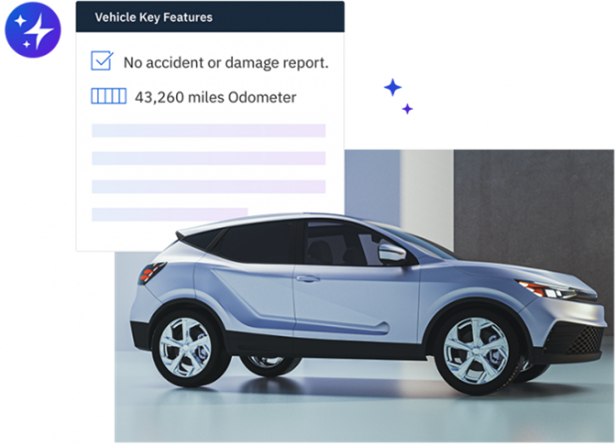Operating Differently in Sales: How to Align the Online and In-Store Buying Experience

Article Highlights:
- The buying process today is fragmented between online and in-store.
- 3 tips for a seamless buying experience no matter where the customer is.
More and more, both customers and OEMs are pushing for online buying features like chat, credit applications, and payment calculators on dealership websites.
Providing these online options isn’t necessarily a problem; the real challenge is combining them seamlessly with your in-store operations.
A vast majority of customers aren’t forgoing dealership visits for a completely online buying experience. Most want some parts of the sale handled remotely and some handled in-store.
But, using separate tools and processes to manage online and in-person buying experiences leads to a disconnect when customers can move between your website and storefront multiple times during the same transaction.
Instead of simply adding online options and hoping for the best, you need to run your sales process differently so you can easily pivot between online and in-store.
Facilitate a seamless experience for both customers and employees with these three tips:
1. Use connected technology:
If a customer builds a deal online – selects a vehicle, deal structure, incentives, trade-in, and even submits a credit app – your sales team should not have to rekey any of that information at any point.
Everything the buyer completes online should be available in your CRM – and I mean everything – from chat conversations to a copy of their driver’s license. What’s more, this information should be tied to a unique identifier for every customer and deal that is consistent from online all the way to F&I and even accounting.
If the customer decides to visit your dealership at any point during the buying experience, your sales team will know exactly who they are, what they’re looking for, and which steps they’ve already completed.
The same goes for the reverse scenario. If your customer begins the deal in-store, but wants to sign documents at home, your F&I manager shouldn’t have to waste time and risk errors uploading documents and tagging every place a signature or initial is needed. Instead, use technology that works together so customer and deal information are automatically available in your electronic signing platform.
When your online and in-store technology are part of the same system, your customers can pivot between locations seamlessly, and your employees can work a single deal with no mix ups – from chat all the way to accounting.
2. Consistent payment calculations:
Accurate pricing is essential. But what happens when a customer is in a different county (or state) and the tax rate being used in your online tool doesn’t match your desking tool which doesn’t match your DMS? You end up either backing into the deal with a discount or explaining to the customer why their monthly payment is $24 higher than they saw online.
To provide a great customer experience and keep your salespeople from going crazy, every detail that factors into the deal needs to be calculated consistently online and in-store, including rebates, incentives, taxes, fees, aftermarket products, and lender approved rates.
3. Add a human element to the online buying experience:
Payments aren’t the only part of the process that need to be consistent between online and in-store. You’ll also want to make sure online customers get the same level of care and individualized attention as in-person customers if they need it.
A chat tool with representatives readily available to answer questions or schedule appointments can help guide buyers through the process. However, it’s important to keep in mind customers have different levels of comfort and familiarity with the car buying process. Some may want extra support, especially when it comes to F&I.
A majority of customers are not very familiar with the F&I department or traditional aftermarket products. In one survey, 40.15% of customers said it was extremely important to speak with an F&I expert while shopping online. Additionally, many buyers may feel more comfortable talking with someone to make sure the deal is finalized properly given the complex and expensive nature of a vehicle purchase.
Consider giving customers the option to video chat with an F&I manager while deciding on products and signing documents. This will help them feel more comfortable, give you an at-bat to upsell aftermarket products, and ultimately close more deals.
It’s time to shift your mindset and start thinking of online retailing and in-store buying as one and the same. Online experiences should be embedded in your sales process, and ultimately, using connected technology, consistently calculating payments, and providing a human element to the online experience removes friction for everyone involved in the sale.
Related Articles:

The Future of Variable Ops with Experts at NADA 2025
Explore how AI is transforming variable operations in automotive retailing with insights from NADA 2025. Learn about efficiency, profitability, and fraud prevention from industry leaders.

Decision made regarding the Vehicle Shopping Rule – now what?
Check out five key takeaways from the Vehicle Shopping Rule to keep your dealership safe from FTC enforcement actions.

3 Ways AI Can Elevate Your Dealership’s Online Inventory
On average, Americans are exposed to between 4,000 and 10,000 advertisements every day. From commercials on TV to billboards on your way to work, all…

The Pizza Playbook – What Ordering Pizza Teaches Us About F&I
For as long as I can remember, my family had “pizza night” every week. Without fail, every Friday evening we’d all gather around the computer…















